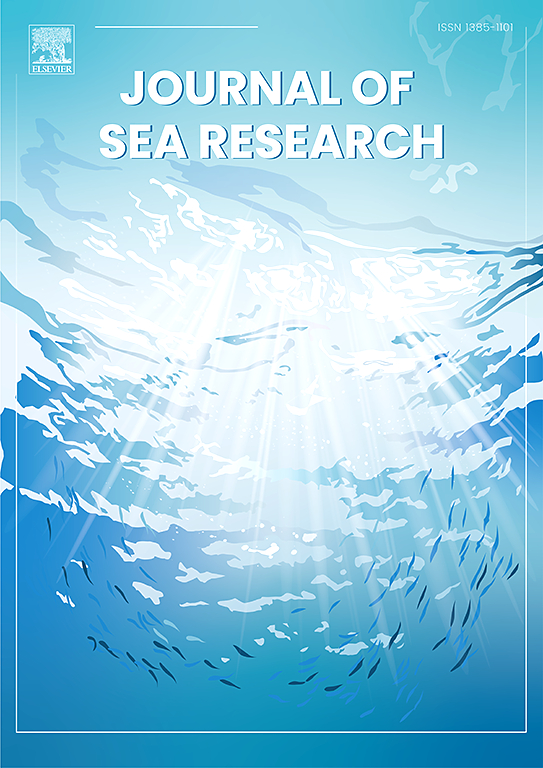Hard substrate fauna on a sublittoral rock revetment in the western Wadden Sea, the Netherlands
IF 2.9
4区 地球科学
Q2 MARINE & FRESHWATER BIOLOGY
引用次数: 0
Abstract
Reefs formed by the tube-building polychaete Sabellaria spinulosa are a well-known and widely recognized example of biogenic reef structures that used to occur in the subtidal zone of the Wadden Sea. We derived their optimal habitat requirements and identified a sublittoral rock revetment in the western Wadden Sea as a potential habitat. We mapped the seafloor properties and sampled hard substrate fauna to assess the suitability for Sabellaria. The sublittoral rock revetment lying at water depths of 3.5 m to 14 m below sea level shows a gully slope with a mixture of rocks and sand. The artificial reef has riprap up to 0.5 m in diameter, stretches over 6 km length and has a surface area of 42.5 ha. In total, 80 taxa of fauna were found in five scrape samples of 0.05 m2 each of which 62 were hierarchically unique taxa. Median species richness was 33 and median Shannon-Wiener diversity was 1.70. One individual of the reef-building polychaete Sabellaria spinulosa was found in one of the samples. This is the third record in the Dutch Wadden Sea since 1955. These findings suggest that this sublittoral rock revetment in the western Wadden Sea has suitable habitat conditions for the tube-building polychaete Sabellaria spinulosa.
荷兰瓦登海西部沿海岩石护岸上的硬底动物群
由管状多毛目沙棘藻(Sabellaria spinulosa)形成的珊瑚礁是众所周知、广为人知的生物礁结构,曾经出现在瓦登海的潮下带。我们得出了它们的最佳栖息地要求,并将瓦登海西部的一个滨下岩石护岸确定为潜在的栖息地。我们绘制了海底属性图,并对硬底质动物群进行了取样,以评估沙贝藻的适宜性。位于海平面以下 3.5 米至 14 米水深处的沿岸岩石护岸显示出岩石和沙子混合的沟壑斜坡。人工礁石的护坡直径达 0.5 米,长 6 公里,面积 42.5 公顷。在 5 个面积各为 0.05 平方米的刮取样本中,共发现了 80 个动物分类群,其中 62 个为层次独特的分类群。物种丰富度中位数为 33,香农-维纳多样性中位数为 1.70。其中一个样本中发现了造礁多毛类动物 Sabellaria spinulosa 的一个个体。这是自 1955 年以来荷兰瓦登海的第三个记录。这些研究结果表明,瓦登海西部的滨海岩石护岸具有适合造管多毛类沙贝藻(Sabellaria spinulosa)栖息的条件。
本文章由计算机程序翻译,如有差异,请以英文原文为准。
求助全文
约1分钟内获得全文
求助全文
来源期刊

Journal of Sea Research
地学-海洋学
CiteScore
3.20
自引率
5.00%
发文量
86
审稿时长
6-12 weeks
期刊介绍:
The Journal of Sea Research is an international and multidisciplinary periodical on marine research, with an emphasis on the functioning of marine ecosystems in coastal and shelf seas, including intertidal, estuarine and brackish environments. As several subdisciplines add to this aim, manuscripts are welcome from the fields of marine biology, marine chemistry, marine sedimentology and physical oceanography, provided they add to the understanding of ecosystem processes.
 求助内容:
求助内容: 应助结果提醒方式:
应助结果提醒方式:


